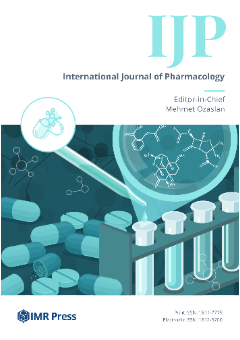International Journal of Pharmacology (IJP) is published by IMR Press from Volume 21 Issue 4 (2025). Previous articles were published by another publisher under the CC-BY licence, and they are hosted by IMR Press on imrpress.com as a courtesy and upon agreement.
Exploring Mechanism of Pelargonidin in Treatment of Pediatric Pneumonia Based on Network Pharmacology Combined with Molecular Docking
Background and Objective: Pediatric pneumonia is a common and potentially serious respiratory infection. In this study, the network pharmacology combined with molecular docking analysis was used to investigate the common molecular mechanism of pelargonidin (PG) in the treatment of pediatric pneumonia. Materials and Methods: The disease-related targets were found out from the GeneCards, DisGeNET and DigSee databases. The target genes of PG were screened through HIT platform. Then, the protein-protein interaction (PPI) network was built by STRING database to identify core-hub targets of PG acting on pediatric pneumonia. Next, Gene Ontology (GO) and Kyoto Encyclopedia of Genes and Genomes (KEGG) analysis were employed to analyze the protein effects and enriched regulatory pathways of the PG in pediatric pneumonia. Lastly, molecular docking analysis were further verifying the interaction between the key targets and PG. Results: A total of 22 pneumonia-related target proteins of PG from the relevant databases were screened out. Among these target proteins, EIF4EBP1, RPTOR, EIF4E, RICTOR, TSC2, NCOA3 and SP1 were core-hub genes in PPI network. The GO analysis and KEGG pathway enrichment analysis indicated that the targets might regulate the PI3K-Akt, mTOR and thyroid hormone signaling pathways. Additionally, EIF4E and RICTOR were the most promising candidates from the results of molecular docking. Conclusion: The present study for the first time identified that the potential targets (EIF4E and RICTOR) of PG in pediatric pneumonia mainly involved in the PI3K-Akt signaling pathway, thereby providing a basis for further understanding of PG in clinical treatments.

